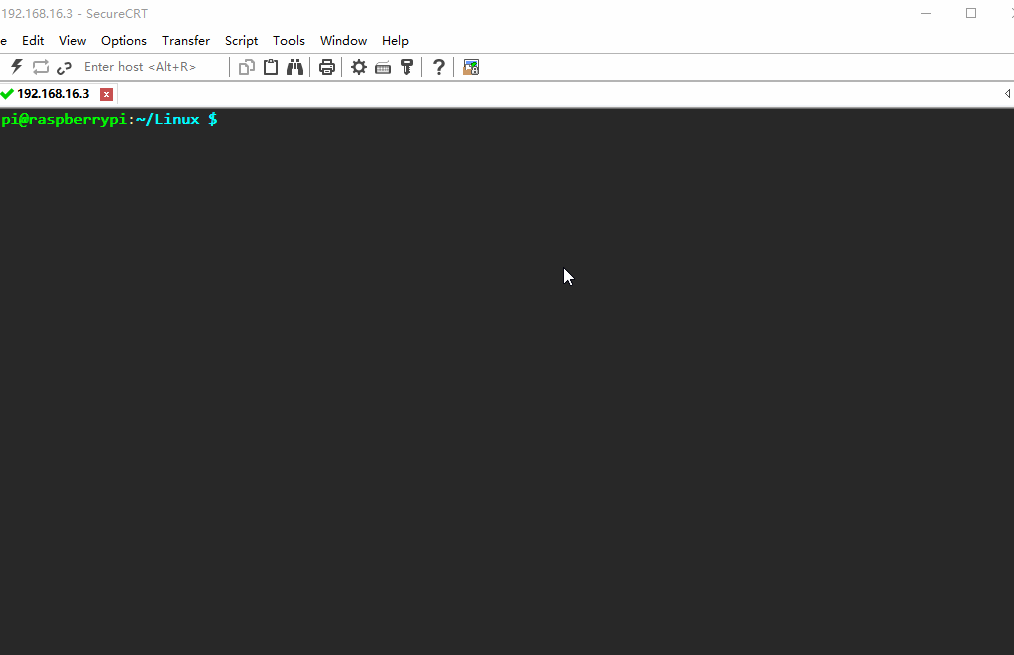树莓派4B Linux的底层驱动编写体验
一、编写前的准备工作
本博客是在虚拟机中编写驱动程序,然后交叉编译到树莓派。所以需要确认几件事:
1. 确保树莓派的内核版本和虚拟机中的Linux内核版本保持一致,否则无法安装驱动;
2. 虚拟机中有交叉编译工具;
3. 对于树莓派4来说,交叉编译驱动模块的时候,KERNEL=kernel7l,树莓派2、3代KERNEL=kernel7;
二、驱动程序编写
驱动的编写同样会根据上一篇博客(Linux底层驱动的简单认知)的框架来写:
1.构建 file_operations结构体
#include 使用static关键字是为了函数名冲突,谁都不能保证拥有一万多C文件的Linux内核中中会不会有名字冲突,所以 static很有必要。这个程序的功能会在内核环境打印相关信息。
2.编写初始化函数
#include 3.编写剩下内容
void __exit Test_exit(void)
{
device_destroy(Test_class,devno);
class_destroy(Test_class);
unregister_chrdev(major,module_name);
}
module_init(Test_dev_init);
module_exit(Test_exit);
MODULE_LICENSE("GPL v2");
二、驱动模块的编译
写好驱动之后需要把驱动文件放到内核文件的 /drivers/char/ 目录下,即字符设备文件夹:
cp Test.c /home/.../drivers/char/
然后在内核文件的 /drivers/char/ 修改 Makefile 文件,添加:
obj-m += test.o //obj-m 即编译成模块,
ARCH=arm CROSS_COMPILE=arm-linux-gnueabihf- KERNEL=kernel7l make -j4 modules
一次性编译驱动模块:
然后根据提示修改错误,我这里提示36行附近少了分号 “;” ,结构体没加分号,修改后再次编译:

编译成功之后会在 /drivers/char/ 目录下生成一个以 .ko 为后缀的驱动模块文件,使用 scp 指令把这个 xxx.ko 驱动模块文件发送给树莓派:
scp drivers/char/xxx.ko pi@/*树莓派的IP地址*/:/home/xxx//*树莓派的某个路径*/
三、驱动模块的安装
在树莓派里使用:
sudo insmod xxx.ko
sudo chmod 666 /dev/xxx
安装驱动之后,给驱动添加权限,这样我们用户才能去使用这个驱动;

如果安装完后,使用 ls /dev/xxx 指令没有相关的模块的话,请检查驱动程序中创建类函数中的第二个是否都是小写字母:

注意:这个参数不能和其他模块有冲突;否则也会安装失败。可以
四、测试驱动
驱动的测试非常简单,我们只要写一个简单的程序去运行就可以:
测试程序代码:
#include 
因为驱动里面打印的信息在内核环境,所以上层环境看不到任何信息,可使用:
dmesg
指令来查看内核的打印信息,驱动的安装错误提示也可以用该指令来查看,驱动的名字最好用小写字母来命名;

